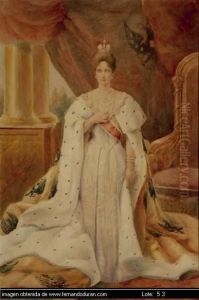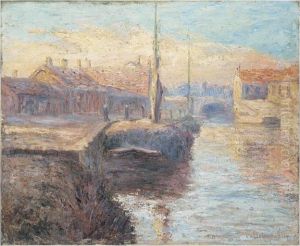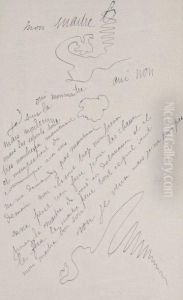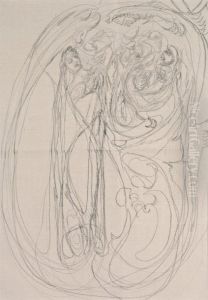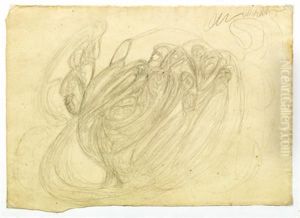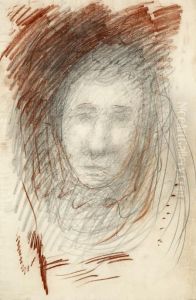Fernand Desmoulins Paintings
Fernand Desmoulins was a French artist known for his painting and illustration work during the late 19th and early 20th centuries. Born on February 19, 1853, in Paris, France, Desmoulins was active during a period of great artistic development in Europe, contributing to the diverse art movements that characterized the era.
Desmoulins studied at the École des Beaux-Arts in Paris, which was the foremost art institution in France at the time. There, he was trained under the guidance of established artists such as Isidore Pils and Henri Lehmann, who were instrumental in shaping the artistic education of many young painters of that era. His education and exposure to various artistic styles at the École des Beaux-Arts would greatly influence his later work.
Over the course of his career, Desmoulins exhibited his work in several prominent venues, including the Paris Salon, an annual art exhibition held by the French government. His style was predominantly realist, with a focus on capturing the intricacies of human expression and the subtleties of light and shadow. He was known for his portraits, historical scenes, and genre paintings, which often depicted everyday life with a sense of intimacy and detail.
Desmoulins' work was well-received by critics and the public alike, and he gained a reputation for his skillful brushwork and thoughtful compositions. Despite this, he has not attained the same level of fame as some of his contemporaries, and his work is less widely known today.
Fernand Desmoulins' life and career were cut short by his untimely death on December 29, 1914, in Paris, amidst the turmoil of World War I. His contributions to French art, however, continue to be recognized by art historians and collectors who appreciate the nuances of the Belle Époque period in which he lived and worked. Desmoulins' paintings can be found in various art collections and museums, where they serve as a testament to his artistic legacy.
